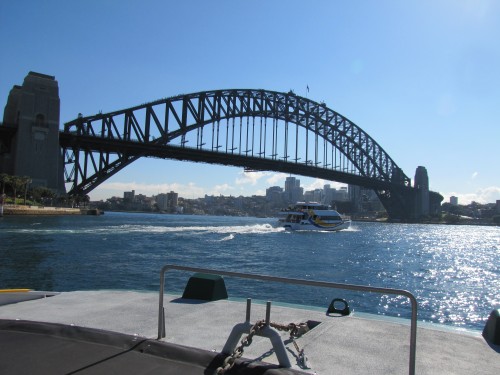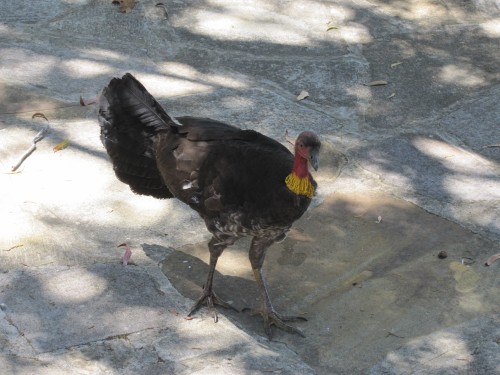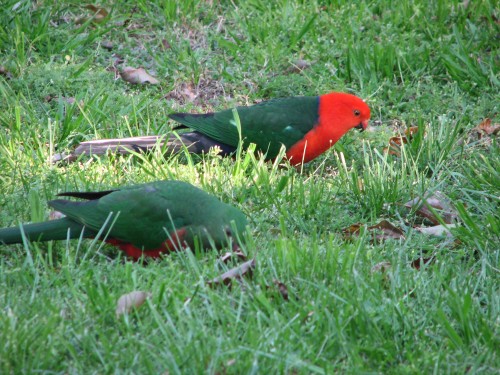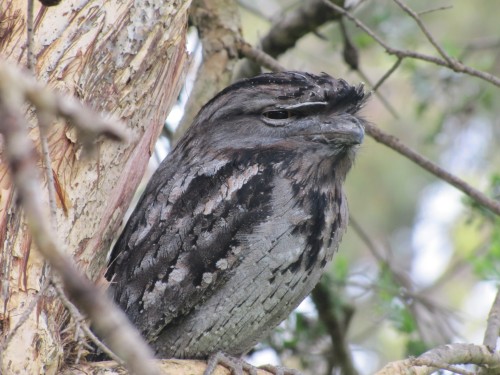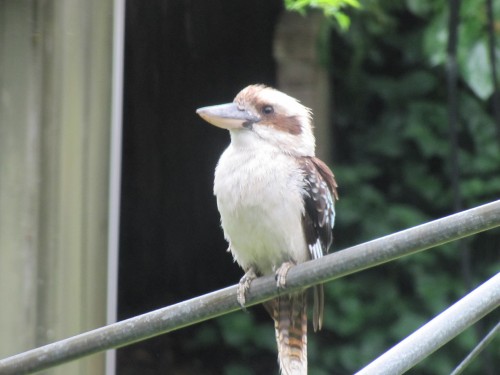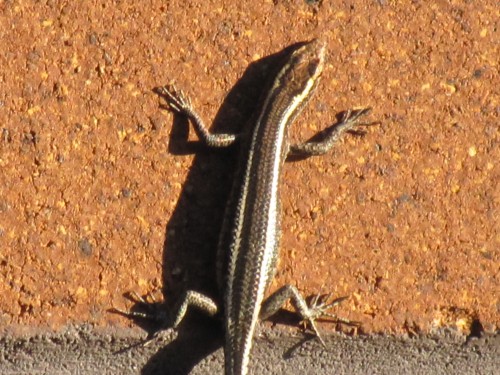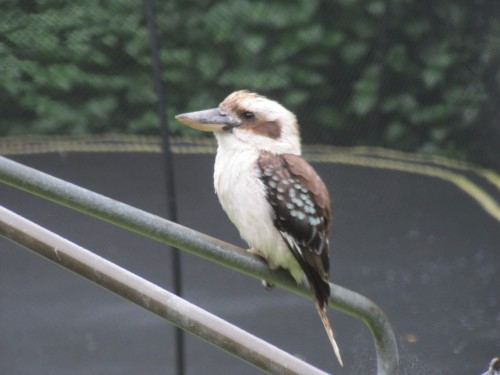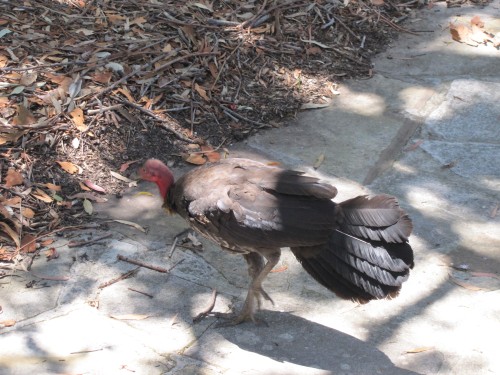Birding with my grandchildren
I am currently staying with my son and family in Artarmon which is on the North Shore area of Sydney. They live just a few train station stops north of Sydney Harbour Bridge. Only last evening we drove over the bridge, something my son and grandson do every week but it is something special for me. I get to do it only once or twice a year.
Living in Murray Bridge in South Australia, we only get over to Sydney once or twice annually. Because it is over 1300km to drive, a journey which takes two whole days to complete, we only get over here frequently. My son and his family only come over to South Australia once every second year, mainly due to both work commitments and the restrictions of the school year.
While in Artarmon I get few opportunities to go out birding. There are some great birding spots within an hour’s drive or even closer. Lane Cove National Park, for example, is only a ten-minute drive away. Getting away from family is quite difficult, especially seeing our visits usually coincide with school holidays. The grandchildren, ages 7 and 4, are very reluctant to let us leave home, and our car is not set up for young children. On the plus side, even at their tender age they have become aware of the birds they see in their garden, as well as any seen while visiting local parks.
Birding in Artarmon
While we are here the majority of my birding is done from their garden. Fortunately, the neighbourhood has plenty of vegetation, including many large eucalypt trees.
Over the last week I have observed the following birds:
- Rainbow Lorikeets: very common, present in large numbers.
- Australian Ravens: very common, I often see small groups of up to 5 or 6 flying overhead.
- Pied Currawongs: very common, and very noisy – they call throughout the day.
- Laughing Kookaburras: more often heard calling than seen.
- Grey Butcherbirds: common and sometimes very vocal.
- Noisy Miners: this species is the dominant native honeyeater in this area. Very common in large numbers.
- Common Myna: an introduced pest species, becoming more dominant as the years go by.
- Welcome Swallow: common but not seen every day.
- Crested Pigeons: present in small numbers, rarely more than about 4 or 5 in any one location.
- Sulphur-crested Cockatoos: often seen or heard flying overhead, sometimes in flocks up to 40 or 50.
- Rock Doves: not seen regularly in or from the garden, but present in large numbers near the local shops.
- Australian Brush-turkey: I haven’t seen this large bird in or near the garden, but my grandson reports that he often sees one or two in his playground, just under 1km from his home.
Other species not yet seen or heard on this visit, but have been seen during past visits include:
- Tawny Frogmouth
- Galah
- Australian King Parrot
- Australian Magpie
- Willie Wagtail
- Common Blackbird
- Common Starling
- Magpie Lark
Tawny Frogmouth in Artarmon, Sydney
My wife and I are currently staying with our son and family in Artarmon, a suburb of Sydney in New South Wales. Our two grandchildren, ages 5 and nearly 3 are taking an increasing interest in birds, due mainly from my influence. I often have my binoculars out looking at the birds seen in their garden or in nearby parks.
Last week my son was removing some clothes from the clothesline after dark. As he was getting the clothes off, he realised that he was being watched from the top of the clothesline a mere two metres away. From his own observations he instantly recognised it as a Tawny Frogmouth.
The bird stayed on the clothesline as he chatted quietly to it, removing the clothes slowly. As he turned to go inside, the bird silently flew off. He remarked to me how silently it departed.
Two nights ago the bird returned; I am assuming it was the same bird. Again it was perched on top of the clothesline. This time the grandchildren were still awake, so in turn I picked them up and quietly approached the clothesline. Each of them had good views of the bird before it silently flew off into the night.
Wonderful.
I didn’t get a photograph as I was more interested in letting the children see the bird. Below is a photo taken in a friend’s garden in the Adelaide Hills several years ago.
Laughing Kookaburra, Artarmon
Over Christmas last year we stayed with family in Artarmon on the north shore in Sydney. Almost every day we heard Laughing Kookaburras somewhere near the house, usually around 4:30am every morning. It was a pleasant wake-up call, albeit a little early.
From time to time my family enjoys seeing a kookaburra visit their back yard, often perching on the clothes line. I guess that they enjoy visiting and picking up for lunch any small skink (a small lizard – see photo below) that is a little tardy in moving to shelter out of sight.
Update Oct 1st 2015: I have recently been talking on the phone with my 7 year old grandson several times a week in recent weeks. He has developed an interest in the local birds (I wonder where he developed that interest?). He has told me that he regularly sees and hears the kookaburras in his garden, in the street where they live and in nearby parks where he goes riding his bike. On enquiring about the resident skinks, he told me that they see many of them every day they are in the garden, but the blue-tongue lizard which used to live under their front steps is no longer there.
For a discussion on the identification of the skink, please read the comments.
Further reading:
- A Laughing Kookaburra comes to lunch
- Interrupted by a Kookaburra
- The skink I referred to is a Common Garden Skink Lampropholis guichenoti
Article updated 1st October 2015.
Some birds of the Artarmon area – and two young birders
I am currently in Sydney visiting my family, including my only two grandchildren. They are very demanding and energetic and this makes me tired, but very satisfied. When we are staying with them I don’t get many opportunities to get out birding. This trip has been a little different and I will write about that in the next few days.
One interesting thing happened this evening. For his fifth birthday in October I gave my grandson a simple, lightweight pair of binoculars. I hasten to add that this was at his request; he’d often seen me using mine and wanted to be like his granddad. We were on the front lawn looking out for any birds we could see. We managed to list the following:
- Australian Raven
- Rainbow lorikeet
- Grey Butcherbird
- Galah
- Laughing Kookaburra
We were just heading off inside for them to go to bed when Miss 2.5 yo came running up to me all excited. She pointed to the Grey Butcherbird perched on the power line about 5 metres away. I guess they are never too young to start getting them interested in birding.
Other birds seen or heard during our nearly three week stay include:
- Pied currawong
- Noisy Miner
- Common Myna
- Crested pigeon
- Australian Brush-turkey
- Sulphur-crested Cockatoo
- Tawny Frogmouth
- Australian Magpie
- Wonga pigeon
- Rock Dove
- Eastern Koel
Good birding.
A close brush for a Brush-Turkey
Australian Brush-turkeys are a very common bird in the eastern states of Australia. Despite being very common, I had only seen this species on one occasion before – and that was in 1981. On this current trip to Sydney I was very keen to not only see this bird but also get some good photos. I scored on both counts.
My 5 year old grandson has recently started gym sessions, learning a variety of gymnastics skills. He is a very physical boy keen to emulate the Circolombia gymnastics/circus troupe one day. He was born in Colombia, so they are something special to him.
Being the keen grandfather I went along to see him go through his paces. On our return journey his mother was driving past the Artarmon Public School oval – the school he will start at next year – when a Brush-turkey crossed the road right in front of us. It nearly came to grief under the wheels of an oncoming truck, but the driver managed to avoid receiving a free turkey for Christmas. Actually I have no idea what they taste like, and it would be an offence to kill and eat one because they are protected by law.
In the previous few days I had been keeping a close eye on roadside verges, parks and gardens because I thought I had seen one a few days earlier while taking the grandchildren to child-care. This was a only a few streets away. My son used to regularly see one scratching around in the small patch of vegetation lining the Artarmon Railway Station, but that was several years ago. Good to see they are still in the district. Readers not familiar with the Artarmon area of Sydney should note that this is about a kilometre south of Chatswood, a very thickly populated and busy part of north Sydney, and a mere 15 minutes train ride from the CBD of Sydney itself.
In case you were wondering, today’s photos were not of the bird crossing the road. I took these photos three days later in a national park a little further north – but that’s a story for another day.
